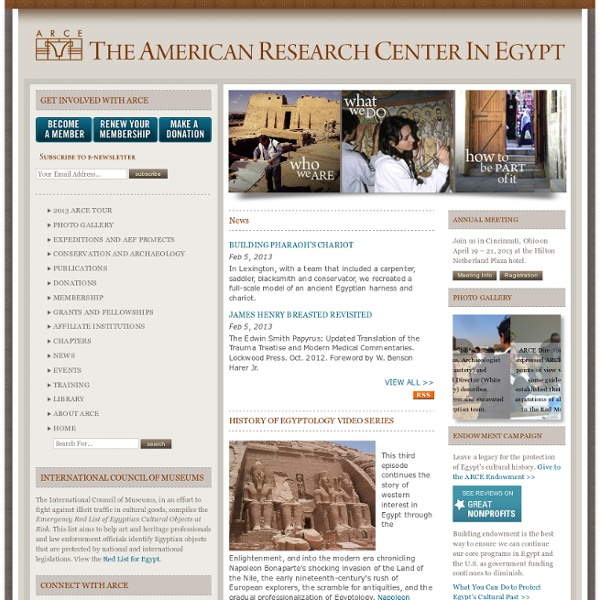



The Archaeology Channel - Welcome Egypt Exploration Society Arachne Arachne is the central Object database of the German Archaeological Institute (DAI) and the Archaeological Institute of the University of Cologne, administrated by Reinhard Foertsch. Arachne is intended to provide archaeologists and Classicists with a free internet research tool for quickly searching hundreds of thousands of records on objects and their attributes. This combines an ongoing process of digitizing traditional documentation (stored on media which are both threatened by decay and largely unexplored) with the production of new digital object and graphic data.
Interactive Dig Sagalassos - City in the Clouds In 1706, Paul Lucas, traveling in southwest Turkey on a mission for the court of Louis XIV, came upon the mountaintop ruins of Sagalassos. The first Westerner to see the site, Lucas wrote that he seemed to be confronted with remains of several cities inhabited by fairies. Later, during the mid-nineteenth century, William Hamilton described it as the best preserved ancient city he had ever seen. Toward the end of that century, Sagalassos and its theater became famous among students of classical antiquity. Yet large scale excavations along the west coast at sites like Ephesos and Pergamon, attracted all the attention. Gradually Sagalassos was forgotten...until a British-Belgian team led by Stephen Mitchell started surveying the site in 1985. Since 1990, Sagalassos has become a large-scale, interdisciplinary excavation of the Catholic University of Leuven, directed by Marc Waelkens. Field Notes 2003-2010 Investigation of Sagalassos and the surrounding countryside
SSEA (Canada) Arqueología, Historia Antigua y Medieval - Terrae Antiqvae - Red social de Arqueólogos e Historiadores Terrae Antiqvae Imágenes Archaeological Investigation and Conservation at San Bartolo, Guatemala Research Year: 2002Culture: MayaChronology: Pre-ClassicLocation: Department of Petén, GuatemalaSite: San Bartolo Table of Contents IntroductionInvestigation and Conservation at San BartoloConclusionList of FiguresSources Cited William A. Introduction Research carried out since the mid-1970"s has dramatically altered our ideas about the size and complexity of Preclassic lowland Maya centers. This, coupled with abundant and spectacular Classic period remains, fostered a bias that Maya civilization developed in the lowlands by around A.D. 300, much later than their highland counterparts, suggesting external origins in addition to a slow pace. Such an isolated region as the Petén would hardly have witnessed the beginnings of Maya civilization, which might rather be expected in parts of the Maya area where the stimulus of contact with other cultures should have quickened development–Central Chiapas seems ideal. Conclusion
ASTENE « The Association for the Study of Travel in Egypt and the Near East (ASTENE) Medieval Castle History, Design of Medieval Castles, Haunted Castles: www.medieval-castle.com Theoretical Structural Archaeology